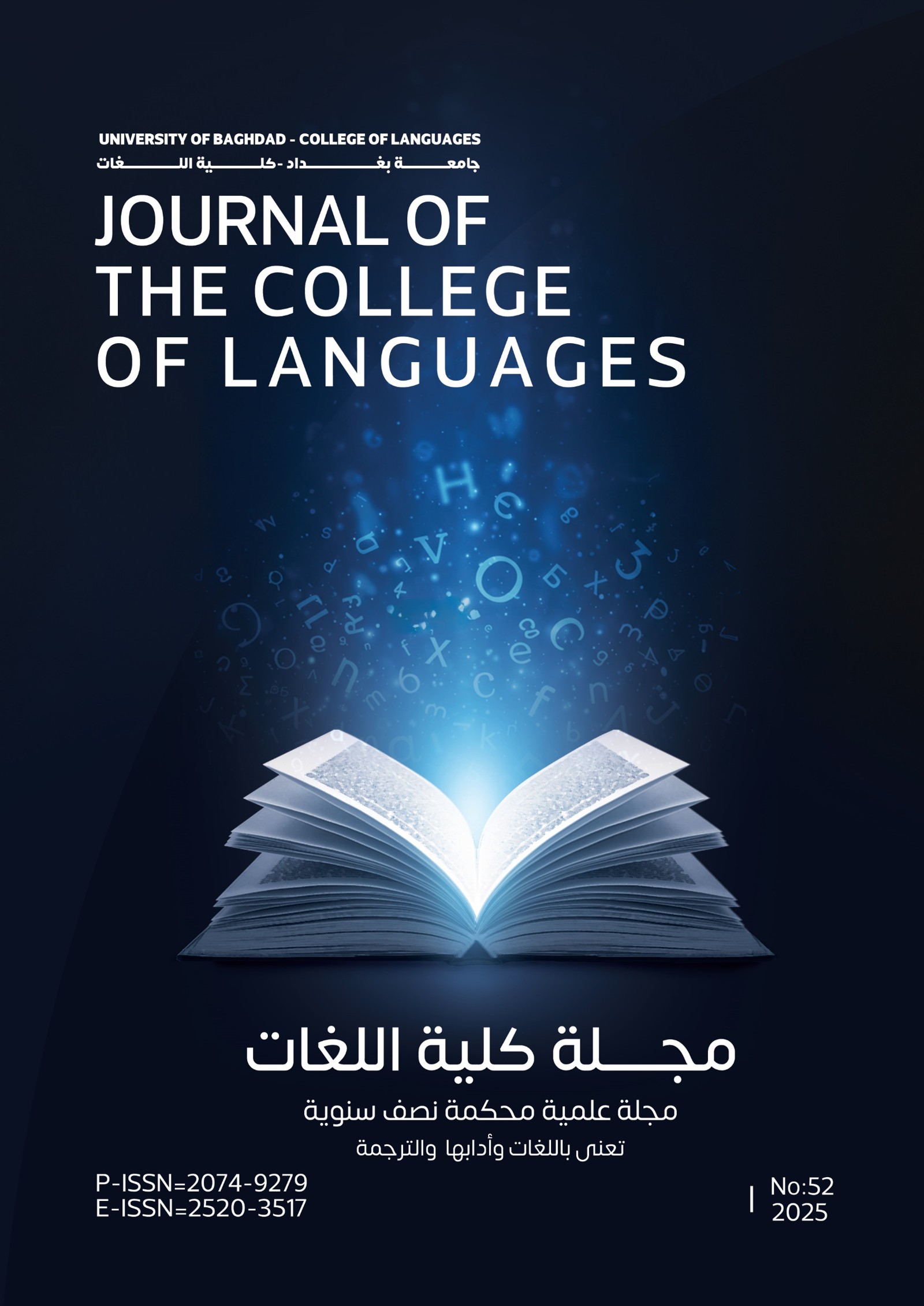A comparative study of Educational Commonalities in Ibn al-Wardi's Lamiyah and Qaboos- Nameh
مشتركات تعليمى در لاميه ی ابن الوردى و قابوسنامه؛ بررسى مقايسه اى
DOI:
https://doi.org/10.36586/jcl.2.2024.0.49.0247Keywords:
didactic literature, moral teachings, Qaboos- nameh, Lamiyah, Ibn al-Wardi, Onsur AL-maali., ادبیات تعلیمی، آموزه های اخلاقی، قابوس نامه، لامیه، ابن الوردى، عنصر المعالىAbstract
A literary-educational work is a work that explains wisdom to the reader and presents moral, educational and instructional issues in a literary form. Qaboos-nameh or Nasihat al-Muluk is an educational and educational book that has a special place in the field of ethics and guidance, where the author guides his children. Also, Ibn al-Wardi's Lamiyah or Nasihat al-Akhwan is a poem containing moral advice and advice in 77 verses that Ibn al-Wardi wrote to his son.
It seems that the main goal of Ibn al-Wardi and Onsur AL-maali in Lamia and Qaboos-nameh was to express educational and moral issues and spread and convey them to future generations. Ibn al-Wardi, like Onsur AL-maali, listed moral points such as knowledge, humility, etc. among the good qualities and emphasized on them. Therefore, it seems that the educational views and moral points of Lamiyah and Qaboos-nameh are influenced by each other and in the same direction, and avoiding social and moral anomalies was one of the goals of these two authors. Moral positivity, avoiding abnormalities has also been intended.
This research with a descriptive-analytical method and after mentioning some points about the biographies of two poets; It examines some common moral doctrines and didactic points in these two works, and in addition to expressing the moral and didactic commonalities of the two works, the role of educational views and moral teachings of the two authors is examined to find out that How two writers have used the teachings based on their valuable experiences to expand educational and guidance matters.
چکیده
اثر ادبی- تعلیمی، اثری است که حکمتی را برای خواننده تشریح میکند و مسایل اخلاقی، تعلیمی و ارشادی را به شکل ادبی عرصه کند. قابوسنامه یا نصیحت الملوک کتابی تعلیمی و تربیتی است که در حوزه اخلاق و ارشاد جایگاه ویژهای دارد که در آن نویسنده به ارشاد و راهنمایی فرزندش میپردازد. همچنین لامیة ابن الوردی یا نصیحة الاخوان منظومهای است مشتمل بر پندها و توصیههای اخلاقی در 77 بیت که ابن الوردی خطاب به فرزندش سروده است.
این پژوهش با روشی توصیفی- تحلیلی و پس از ذکر نکاتی در مورد زندگینامه دو شاعر؛ به بررسی برخی آموزههای اخلاقی و نکات تعلیمی مشترک در این دو اثر میپردازد و علاوه بر بیان مشترکات اخلاقی و تعلیمی دو اثر، نقش دیدگاههای تربیتی و آموزههای اخلاقی دو مولف بررسی میشود تا در یابد، این دو ادیب چگونه از آموزههای مبتنی بر تجربههای ارزشمند خود برای گسترش امور تعلیمی و ارشادی استفاده کردهاند. یافتههای پژوهش نشان میدهد که آموزههای اخلاقی و تربیتی نقش اساسی در اندیشههای این دو مولف دارند و آنها بر جهانی اخلاقی و مبتنی بر آموزههای اخلاق تاکید دارند؛ همچنین دلیل توفیق این دو مولف در پاسخ گویی به نیازهای اخلاقی و تربیتی، انتخاب موضوعات تعلیمی و ارشادی مهمی است که نقش اساسی در زندگی هر فردی دارند که از میان آنها میتوان به علم آموزی، افتخار نکردن به اصل و نسب، مرگ آگاهی و... اشاره کرد.
Received on 4/7/2023
Accepted on 20/8/2023
Published on 2/1/2024
References
Abdanan. M, M. (2008). The Wisdom in the Poetry of Ibn Al-Wardi. Horizons of Islamic Civilization, 11(21), Rabi` Al-Awwal, 399-419.
Amiri, J. (2008). The History of Arabic Literature in the era of Mamluki Osmans. Tehran, Iran: The Organization for Researching and Composing University Textbooks in the Islamic Sciences and the Humanities (SAMT), Humanities Research and Development Center.
Baghdadi, Kh. (1975). The Journey In Pursuit Of Hadith. Beirut, Lebanon: Dar Al-Kotob Al-Ilmiyah.
Elhami, F. (2013). Qaboos Nameh’s Position in the Realm of Didactic Literature. Didactic Literature Review, 4(16), 131-158.
Al-Fakhouri, H. (1986). Al-Jami' in the History of Arabic Literature (Old Literature). Beirut, Lebanon : Dar Al-Jil.
Ghanbari, B. & M.pour, M. A. (2013).The meaning and concept of the death of consciousness and its effects from the perspective of Imam Ali. Marefat (The Imam Khomeini Educational & Research Institute), 21(183), 41-27.
Ghazzali, M. bin M. (1997). Chemistry of Saadat, by Hossein Khadio Jam. 8th ed, Tehran, Iran : Elmi and Farhangi Publications Company.
Hosseini, S. A (2007). Extravagance in Imamiyyah jurisprudence. Farhang Jihad magazine, 13(3), 49-62.
Khosravi.H, S. Gholamreza. (2009). Translation and research of the words of the Qur'an. Vol. 1, 4th ed, Tehran, Iran: Mortazavi.
M. J, M. H & G, S. (1997).Social Concepts in Qaboos Name. Journal of Faculty of Literature and Human Sciences (Shahid Bahonar University of Kerman), 1(1), 114-127.
Shamisa, S. (1994). Literary Genres. Tehran, Iran: Ferdous.
Tajlil, J., & Iranmanesh, Z. (2011). The ethical teaching(s) in narrative & non narrative texts. Didactic Literature Review, 3(11), 1-28.
Al-Zamaki, S. Al. (2006). Children Helping (Explanation of The Lamiyah Ibn Al-Wardi). Lebanon: Beirut, Dar Al-Kotob Al-Ilmiyah.
Z, T., & S, P. (2012). A sociological Approach on the Poetry of the Age of Deterioration. Lisan-i Mubin, 3(6), 74-105.
Yalameha, A. (2011). A comparative study of didactic poetry of Firdausi and Hafiz. Didactic Literature Review, 3(11), 153-175.
Yoosufi, Gh.h (1997). Life Lessons (Excerpt from Qaboos Name). 5th ed, Tehran, Iran: Elmi Publications.
Downloads
Published
Issue
Section
License
Copyright (c) 2024 Journal of the College of Languages (JCL)

This work is licensed under a Creative Commons Attribution 4.0 International License.








